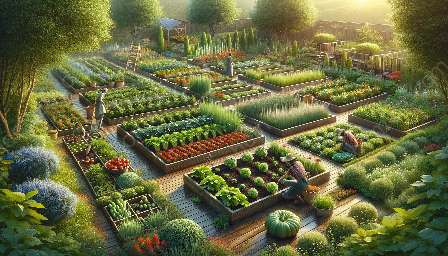When it comes to gardening and landscaping, achieving the right nutrient balance in your soil is crucial for the health and growth of your plants. This topic cluster will explore the importance of nutrient balance, its compatibility with soil preparation, and provide valuable insights for maintaining a healthy and thriving garden or landscape.
The Significance of Nutrient Balance
Nutrient balance refers to the appropriate ratio and availability of essential nutrients in the soil, which are vital for plant growth. These nutrients include nitrogen, phosphorus, potassium, calcium, magnesium, and various micronutrients such as iron, zinc, and manganese. Achieving the correct balance of these nutrients is essential for promoting strong root development, robust foliage, vibrant blooms, and overall plant vigor.
When the soil lacks certain nutrients or when their ratios are imbalanced, plants can exhibit stunted growth, poor flowering, and increased susceptibility to pests and diseases. On the other hand, excess nutrients can lead to nutrient imbalances, causing toxicity and adversely affecting plant health.
The Interplay with Soil Preparation
Soil preparation plays a pivotal role in establishing and maintaining nutrient balance in the garden or landscape. Prior to planting, it's essential to assess the existing soil composition and amend it as needed to provide an optimal environment for plant growth. Testing the soil pH and nutrient levels is a critical step in determining the specific needs of the plants you intend to grow.
Organic matter, such as compost and well-rotted manure, can be incorporated into the soil to improve its structure and fertility. Additionally, specific soil amendments may be required to address deficiencies or excesses of particular nutrients. For example, adding bone meal can increase phosphorus levels, while using gypsum can help to address excessive levels of sodium.
Furthermore, practicing sustainable soil management techniques, such as crop rotation, cover cropping, and mulching, can help maintain soil health and nutrient balance over time. These practices promote biological diversity and activity in the soil, enhancing its ability to provide essential nutrients to plants.
Key Considerations for Nutrient Balance
- Understanding Plant Requirements: Different plants have varying nutrient needs, so it's important to select plants that are well-suited to the soil conditions and available nutrients in your garden or landscape.
- Regular Soil Testing: Periodically testing the soil for nutrient levels can help ensure that the necessary adjustments are made to maintain optimal nutrient balance.
- Choosing the Right Fertilizers: Selecting fertilizers that provide the appropriate mix of nutrients and applying them in accordance with plant requirements can help support nutrient balance.
- Observing Plant Symptoms: Monitoring plants for signs of nutrient deficiencies or toxicities, such as yellowing leaves or stunted growth, can prompt timely corrective actions.
Nutrient Balance and Sustainable Gardening
In the context of gardening and landscaping, prioritizing nutrient balance aligns with sustainable practices that minimize environmental impact and promote long-term ecosystem health. By optimizing nutrient availability in the soil, gardeners and landscapers can reduce reliance on synthetic fertilizers and minimize runoff of excess nutrients into waterways, thus protecting the broader environment.
Embracing organic gardening methods, including composting, natural mulching, and utilizing organic fertilizers, can contribute to maintaining nutrient balance while fostering a healthy and biodiverse soil ecosystem. This approach supports the long-term health and resilience of plants, reduces the risk of nutrient leaching, and promotes beneficial microbial activity in the soil.
Conclusion
Ensuring proper nutrient balance in gardening and landscaping is essential for nurturing thriving, resilient plants and creating aesthetically pleasing outdoor spaces. By understanding the significance of nutrient balance, its interplay with soil preparation, and the role it plays in sustainable gardening practices, gardeners and landscapers can set the stage for healthy, vibrant landscapes and bountiful gardens.
Through thoughtful planning, regular soil assessments, and informed decision-making regarding nutrient management, individuals can enjoy the rewards of lush, flourishing gardens and landscapes while minimizing their environmental footprint.





















